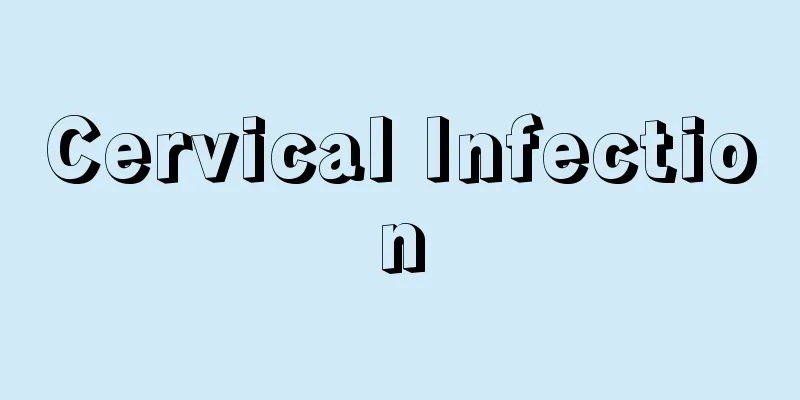Cervical Infection

|
Cervical intraepithelial neoplasia (CIN) is a common disease among women. After the occurrence of cervical CIN, it must be treated in time, because cervical CIN has a certain possibility of worsening. If cervical CIN worsens, it will have a great impact on the health of the female reproductive system. Next, I will introduce you to the relevant knowledge about cervical CIN! 1. Introduction to Cervical Infarction Cervical epithelial atypical hyperplasia (CIN) is a precancerous lesion. The cervical epithelial cells show varying degrees of atypia, manifested as different cell sizes and shapes, enlarged and darkly stained nuclei, increased nuclear-cytoplasmic ratio, increased nuclear division figures, and disordered cell polarity. The lesions gradually develop from the basal layer to the surface layer and are divided into three grades according to the degree of the lesions. 2. Cervical CIN Grading Cervical intraepithelial neoplasia (CIN) is the name of a group of diseases, including cervical atypical hyperplasia and cervical carcinoma in situ. Cervical carcinoma in situ refers to the canceration of cervical epithelial cells, but the cancer has not broken through the basement membrane and has not invaded the stroma. Atypical cervical hyperplasia refers to the replacement of part or most of the cervical epithelial cells by atypical cells of varying degrees, which is a precancerous lesion of the cervix. According to the degree of epithelial invasion, it can be divided into three levels. 1. Mild (CIN Ⅰ): The lesion is limited to the lower 1/3 of the epithelium, that is, mild cervical atypical hyperplasia; 2. Moderate (CIN II): The lesion is limited to 1/2~2/3 of the epithelial layer, that is, moderate cervical atypical hyperplasia; 3. Severe (CIN grade III): The lesions involve almost all epithelial layers, leaving only 1-2 layers of normal squamous epithelium on the surface, that is, severe cervical atypical hyperplasia and cervical carcinoma in situ. Cervical intraepithelial neoplasia of various grades may progress to invasive cancer. Generally speaking, the higher the grade, the greater the chance of progression to invasive cancer. 3. Treatment of cervical CIN Different treatment methods can be selected according to the extent of the lesion and the degree of histological abnormality. 1. For patients with CIN grade Ⅰ, they can be treated as cervicitis, with follow-up visits and scraping examinations every 3-6 months. 2. For CIN grade II, electrocoagulation, freezing, laser, microwave and other methods can be used for treatment. 3. For patients with CIN grade III, radical hysterectomy is recommended. For those who wish to preserve their reproductive function, cervical cone resection can be performed. |
<<: How long does it take for cervical erosion of the third degree to turn into cancer?
>>: Precursor of uterine fibroid cancer
Recommend
Zhang Wenhong leads the way! The first domestic oral COVID-19 drug report is released
On May 18, the first "treatment report"...
How is Apieu Lip Glaze CR03? Apieu Lip Glaze CR03 Usage Review
I want to scream for Apieu every day, how can it ...
When does pregnancy chest pain go away?
After confirming pregnancy, many women will touch...
Brown discharge a week before period
The key reason for brown discharge before menstru...
How to treat diarrhea during menstruation
Girls have their periods every month. They are ve...
Trouble comes from "sweetness"? WHO's new guidelines take a tough stance on sugar substitutes
Existing evidence suggests that sugar substitutes...
What causes lower abdominal distension and pain during pregnancy?
Once a woman becomes pregnant, she will experienc...
What causes the dryness below?
During sexual intercourse, a woman's vagina m...
JD.com: 63% of people have mobile phone storage anxiety, and 75.5% of users have 256GB or less mobile phone storage space
According to a recent survey conducted by JD Cons...
Standard implantation cooling temperature chart
Generally speaking, if the body temperature rises...
Application of 3D printed metal prostheses in the human body
Author: Ying Pu, deputy chief physician of Changs...
Why do armpits turn dark after pregnancy?
Pregnancy is a very happy thing for women, and ma...
What are the risks of pregnancy with uterine scar?
Many women will have scars on their uterus after ...
Can a woman have an abortion three months into her pregnancy?
With the openness of human thinking about sexual ...
Will QR codes be used up soon? Can genetic testing reveal your IQ? Which of these ten "scientific" rumors have you believed?
"QR codes will soon be used up", "...









